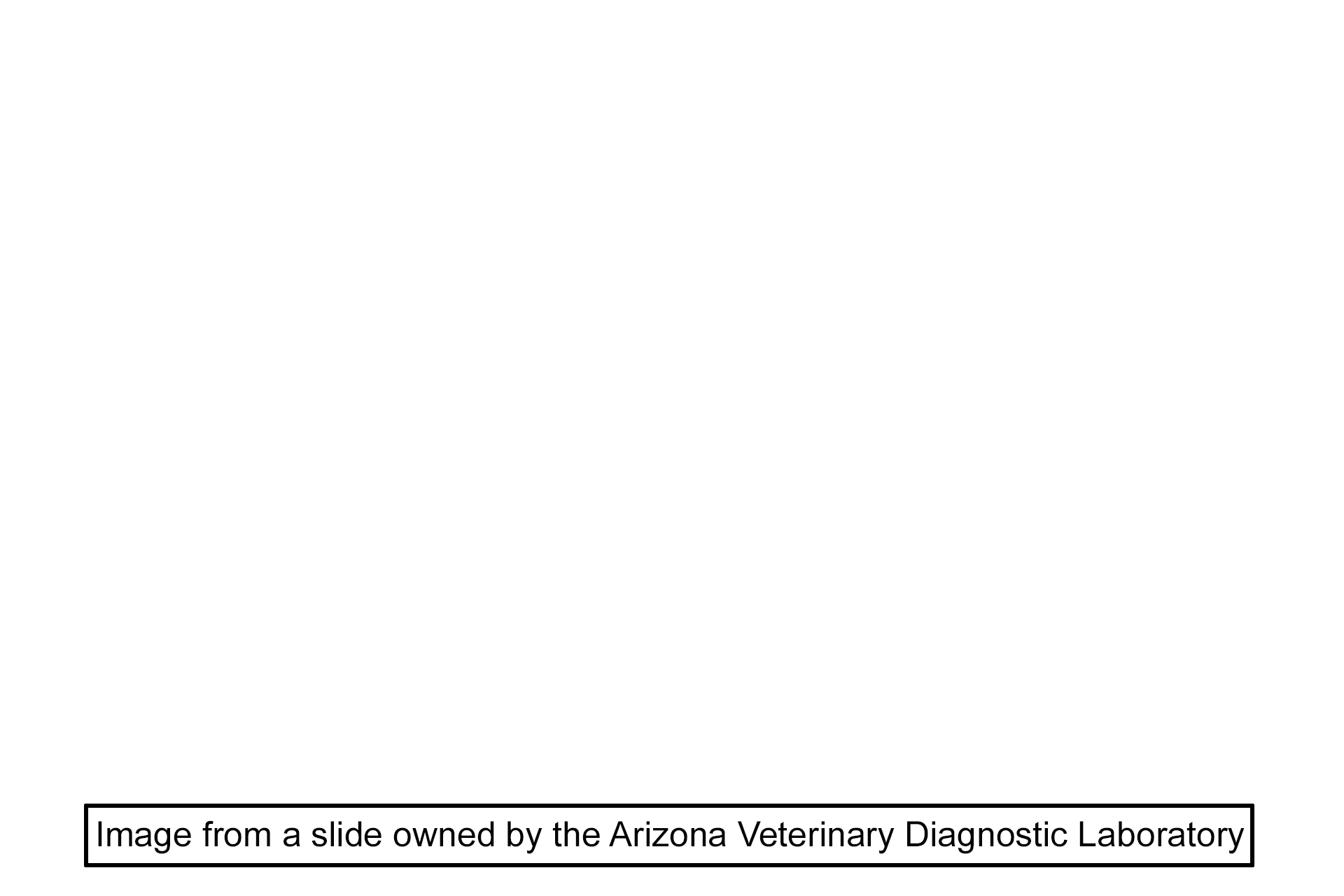
Globe: Ciliary body
The ciliary body, its ciliary processes, and the iris belong to the middle tunic. These structures lie adjacent to the limbus, the corneo-scleral junction of the outer tunic. The double-layered epithelium covering the ciliary body produces aqueous humor. Grooves between the ciliary processes serve as attachment points for zonular fibers that extend from the ciliary processes to suspend the lens. 100x

Ciliary body >
The ciliary body is a ring-shaped, triangular wedge of the uvea covered by a two-layered epithelium. Beneath the epithelium is a stroma of loose connective tissue rich in elastic fibers, blood vessels and melanocytes. Enclosed within the ciliary body is the ciliary muscle, bundles of smooth muscle oriented in three planes, contraction of which decreases tension on the lens.

- Ciliary muscle
The ciliary body is a ring-shaped, triangular wedge of the uvea covered by a two-layered epithelium. Beneath the epithelium is a stroma of loose connective tissue rich in elastic fibers, blood vessels and melanocytes. Enclosed within the ciliary body is the ciliary muscle, bundles of smooth muscle oriented in three planes, contraction of which decreases tension on the lens.

- Ciliary epithelium >
The ciliary epithelium is a portion of the non-sensory retinal layer of the inner tunic. This layer lines the posterior surface of the ciliary body and its processes, before continuing over the posterior surface of the iris. Ciliary epithelium consists of two epithelial layers, with the one adjacent to the stroma being heavily pigmented. Aqueous humor is produced by the ciliary epithelium.

- Ciliary processes >
The ciliary processes are ridge-like extensions of the ciliary body and are also covered by ciliary epithelium. Zonular fibers attach to the grooves separating the ciliary processes.

Zonular fibers >
Zonular fibers are delicate microfibrils, which arise from the basal lamina of the ciliary epithelium and attach to the lens capsule. Contraction of the ciliary body muscle alters the tension on these fibers and, thus, affects the shape of the lens.

Iris >
The iris is a portion of the middle, or vascular, tunic and is attached to the anterior portion of the ciliary body. The iris is involved in regulating the amount of light that enters the eye.

Corneo-scleral junction >
The corneo-scleral junction, or limbus, lies just anterior to the ciliary body. The limbus is the transitional zone where the clear subdivision of the outer tunic, the cornea (to the left), meets the opaque portion, the sclera.

Sclera
The corneo-scleral junction, or limbus, lies just anterior to the ciliary body. The limbus is the transitional zone where the clear subdivision of the outer tunic, the cornea (to the left), meets the opaque portion, the sclera.

Area shown in next image >
This area is shown at higher magnification in the next image.

Image source >
Image taken of a slide owned by the Arizona Veterinary Diagnostic Laboratory.